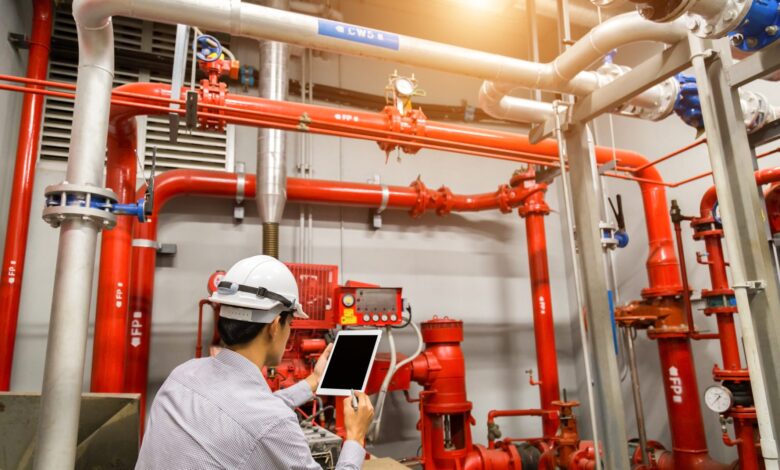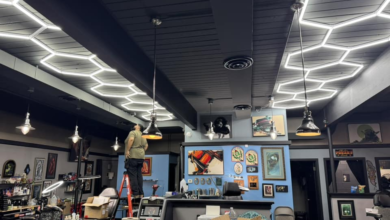How to Prepare Your Property for Fire Safety Inspections in 2025

Fire safety isn’t just about ticking boxes. It’s about protecting lives, avoiding fines, and keeping your building safe for everyone who walks through the door.
If you’re managing a commercial or industrial property in the UK, fire safety inspections are coming your way in 2025—and they’re getting stricter. So, how can you get ready?
Good news: this guide breaks everything down into simple steps. Let’s walk through your complete fire safety inspection checklist together.
Why Fire Safety Inspections Matter
Think of inspections like your car’s MOT—but for your building’s safety. You wouldn’t drive without brakes, right? Fire safety is no different.
- Legal requirement under UK law
- Protects staff, tenants, and customers
- Helps stop small issues from becoming dangerous
- Avoids fines and legal trouble
- Keeps your building insurance valid
Your Fire Safety Checklist for 2025
Here’s a simple version of everything you need to check:
| Task | What to Do | How Often |
| Fire risk assessment | Make sure it’s up to date and done by a pro | Every 12 months |
| Fire alarms | Test weekly, service every 6 months | Weekly & twice yearly |
| Emergency lighting | Check monthly and do a full test yearly | Monthly & annually |
| Fire doors & exits | Make sure they work and aren’t blocked | Regularly |
| Fire extinguishers | Inspect and service | Annually |
| Staff training & drills | Keep everyone trained and ready | Yearly |
| Smoke ventilation | Test and clean your systems | As per regulations |
| Keep records | Log everything! | Always |
1. Fire Risk Assessment
Let’s start with the most important step.
Your fire risk assessment is a written report that looks at:
- What could cause a fire
- Who’s at risk
- What you’re doing to prevent it
- What you still need to fix
Ask yourself:
- Is it less than 12 months old?
- Was it done by a trained professional?
- Have you acted on the recommendations?
If not, now’s the time. You can book a professional fire risk assessment with our team at FTG Ltd.
2. Fire Detection and Alarm Systems
Your alarms need to work when it matters most.
You should:
- Test the alarm every week
- Service it twice a year
- Make sure alarms are in all key areas
Tip: Write it down in a logbook each time you test it. Inspectors will ask for it!
3. Emergency Lighting
If the power goes out in a fire, you’ll need lights to guide people to the exits.
Here’s what to check:
- Do you have lights in all escape routes?
- Are they tested monthly?
- Have you done a full 3-hour test this year?
These lights must stay on even if the power fails, so make sure they’re ready.
4. Fire Doors and Escape Routes
Fire doors help stop smoke and flames from spreading. They need to work properly every time.
Check these things:
- Doors close on their own and fit tightly
- Nothing is blocking exits or corridors
- Fire exit signs are visible and lit
Never prop open fire doors—inspectors hate that (and it’s dangerous!).
5. Fire-Fighting Equipment
Even if you never use them (and we hope you don’t), fire extinguishers are a must.
Make sure:
- You have the right type in each area (CO₂, foam, powder, etc.)
- They’re mounted and easy to see
- A certified professional services them every year
- Everyone knows where they are
6. Smoke Ventilation Systems
In a fire, smoke is often more dangerous than flames. That’s why your building’s ventilation system needs to be in top shape.
What to look at:
- Are your vents and systems clean?
- Do the AOVs (automatic opening vents) activate when tested?
- Have they been serviced recently?
Need help? At FTG Ltd, we install and maintain smoke ventilation systems across the UK.
7. Staff Training and Fire Drills
People are the key to a safe evacuation.
Make sure:
- You’ve done a fire drill in the past year
- Everyone knows where to go
- Fire wardens are trained and assigned
Even the best equipment won’t help if no one knows what to do in a real emergency.
8. Keep a Fire Safety Logbook
If you didn’t write it down, it didn’t happen.
That’s how inspectors see it.
Here’s what should be in your logbook:
| Document | Why It’s Important |
| Risk assessments | Proves you’ve identified and reduced risks |
| Alarm tests | Shows your system works |
| Emergency lighting checks | Confirms a safe escape in the dark |
| Fire extinguisher servicing | Proves your kit is ready to use |
| Training logs | Confirms your team is prepared |
| Fire drills | Shows you’ve practised what to do |
Store it somewhere safe and easy to access during inspections.
Bonus Tip: Do a Pre-Inspection Audit
Want peace of mind before the real inspection?
Book a professional fire safety audit with us.
We’ll walk through everything with you, spot what’s missing, and fix it fast.




